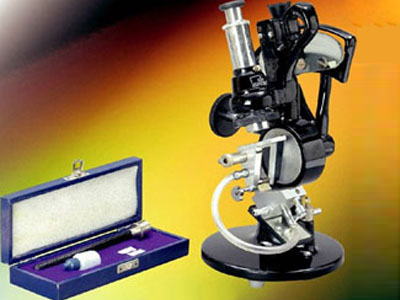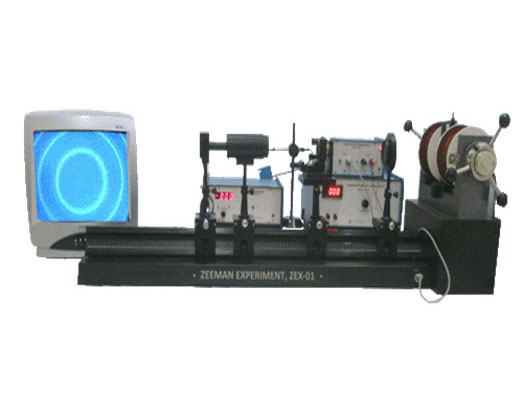Abbe’s Refractometer
Features:

Abbe’s Refractometer
Features:

Research Polarimeter – Half Shade
Features:

Babinet Compensator
Features:

Laser Spectrometer
Setup Supplied with the following:

Michelson Interferometer
Features:
| Surface Flatness | λ/10 (both faces) |
| Parallelism | 5 arcsec. |
| Mirrors | 2 Nos. |
| Focal Length | 25mm thickness 10mm |
| Front surface Coated | Coating material: AI with SiO2 |
| L.C. of Instrument | 10¯4mm |

Constant Deviation Spectrograph (C.D.S.)
Features:

X-Ray Diffraction Simulation Experiment (XDE-01)
Object: Identification of Lattice and Determination of Lattice Constant by X-Ray Diffraction Simulation
Setup Consist of the Following::

Dielectric Constant of Solids & Liquids (DSL-01)
A Cylindrical capacitor has been used for liquid samples and different size parallel plate capacitor for solid samples.
Setup Supplied with the following:

Zeeman Effect Setup (ZEX-01)
Setup Supplied with the following:

Millikan’s Oil Drop Experiment, MOD-01 (LED TV)
Setup Supplied with the following: